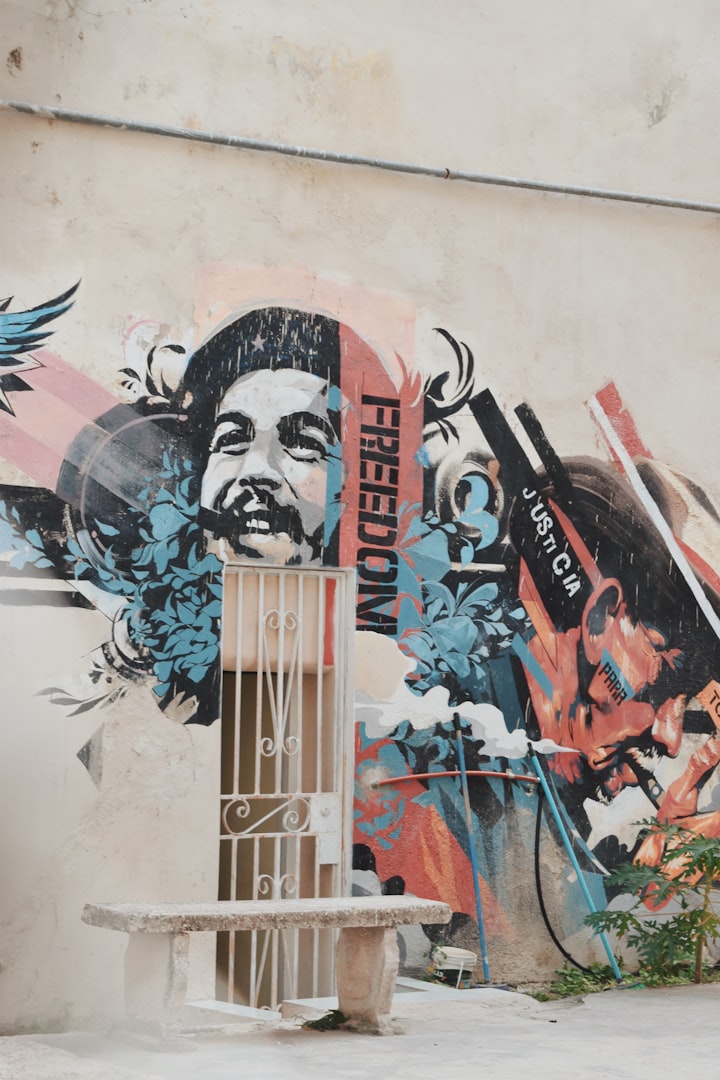Why The Court Ruled The Way It Did In the Dreadlock Hair Case
The colonial racism that haunts Jamaica

ZV, a minor and her parents wear dreadlocks. They do so outside of any adherence to religion. Her school has an unwritten policy of ‘no braids, no beads, no locking of hair’. Placement at the school is dependent on adherence to this policy. Reason: parents do not wash their dreadlocked children’s hair, “in a timely manner, and the hair gets junjo” (mildew) and has created serious lice infestation issues in the past prompting administrative intervention.
Misleading News Reports, Rage And Outrage
On July 31, 2020, a day before the English-speaking Caribbean celebrates Emancipation several international publications including The Washington Post led with headlines saying: Jamaica’s High Court Rules Schools Can Ban Dreadlocks. In essence true but a more nuanced headline would have given greater perspective and perhaps not set off international and public outrage at the irony that dreadlocks, an outward cultural expression of Rastafarianism that put Jamaica on the map, was now being cast off.
The High Court ruled that schools could ban dreadlocks for hygiene purposes — exactly what ZV’s legal team should have contested: Why are a school and court identifying natural black hair with issues of lice and junjo?
What exactly is at the heart of Kensington Primary’s (one of the defendants) policy to ban braids and dreadlocks — two identifiers of Black cultural expression?
Why should wearing dreadlocks be restricted to religious purposes in many of the island's institutions when in countless cases people wear the style for reasons other than religious beliefs? The locking of hair is a natural growth process of Black people who refuse to submit to a social construct to cut their hair or comb it. Why then should any society penalize them for that?
The Policy Of “no braids, beads, no locking of hair” And Covert Racism
The case exposed most brutally that although the chains on our feet were removed 182 years ago we are still suffering the perils of institutional racism.
“A child was refused because of her Black hair, you know?” said Dale Virgo (ZV’s father) in the Post’s “Jamaican school can ban dreadlocks, court rules.”
Ironic how Dale Virgo could articulate in one sentence what Isat Buchanan, the lawyer representing ZV couldn’t.
Religion, Rastafarianism and dreadlocks as a religious sacrament were peripheral to this case. Mr Buchanan squandered an opportunity to resurrect a “dormant” issue — that of the systematic aversion to Black people and their hair.
Braids and dreadlocks have over time become part of the natural landscape of places before unheard of. Just recently Jamaica’s Parliament boasted two dreadlock Parliamentarians.
So, why in 2020 are institutions still trapped in an era when Afro-Caribbean men and women had to apply harmful chemicals and hot irons to their hair to meet acceptable Eurocentric standards?
Why is there still such a violent aversion to Black hair that it is highly likely that a school would hide behind issues of lice infestation and “junjo” (mildew) to not have these styles corrupt the purity of the aesthetic?
Race and the lingering vestiges of colonial racism that live on in the minds of our people even after 182 years of “Emancipation” cause all kinds of derricks to be used to hide endemic prejudices toward Black hair and force conformity to European standards for acceptability. This was an opportunity missed to again place the issue front and centre in no other an institution than the courts.
Questions That Kensington Primary Should Have Been Forced To Answer
There are so many questions that Kensington Primary should have been forced to answer about its “unwritten policy”:
Primarily, what scientific evidence does it have that children with braids or dreadlocks are more susceptible to lice and junjo? No other ethnicity or hair types were mentioned so this is implied.
There is no scientific evidence identifying what hair types, style or hair length are susceptible to lice infestation. It is also a misconception that “only dirty people and people living in unhygienic conditions are infected with lice”.
Is the school saying that only Afro-Jamaican children with natural hair have hygiene issues?
What evidence does Kensington Primary have to make the accusation that children with braids, beads or locks don’t wash their hair in a “timely manner”?
Are they saying that children with processed hair for a fact wash their hair in a “timely manner”? They are Black too after all!
Are they insinuating that children of Indian, Chinese, European, Arab etc. extract are not prone to “lice infection” because their hair is washed in a “timely manner” or just due to their hair type?
What exactly do they mean by “timely manner” — every day, every other day, weekly, every two weeks, monthly? We needed to know.
And how do they know when children with braids etc. wash their hair? What mechanisms do they have in place to make the determination and link to lice?
Subliminally, should we take this as a reinforcement of the practice to chemically process our children’s hair? Is that what Kensington Primary is suggesting with this overtly racist “unwritten policy”?
Are they saying that Afro-Jamaican children with “braids, beads, locking” are the only ones in that school that get “lice infection” because their hair is not washed in a “timely manner”? Children with processed hair were not mentioned in this “policy” so should we take it to mean they are not prone to “lice infection”?
Is Kensington Primary Trying To Hide Its Racism?
We are letting our emotions get in the way of rational thinking. Why blame the court for doing exactly what the court is supposed to do — make an informed judgement based on points of law and how similar or dissimilar the arguments presented are to those laws? Should the court be blamed for the ineptitude of a lawyer? Did the system fail or did it rule on the strengths of the arguments presented? After reading the entire sixty pages of the judgement I’m disposed to vindicate the court because I can see where Mr Buchanan’s argument fell.
I think the legal team representing ZV failed to identify the proper course of action and the court had no alternative but to rule against them. ZV’s legal team failed her an by extension the fight against the systemic rejection of Blackness.
Mr Buchanan made this into an issue about a Rastafarian child being kept out of a public institution because of dreadlocks worn out of religious observance, contradicting a declaration by the very parents that they were not Rastafarians and against the background of an issue long determined as acceptable — that of the wearing of dreadlocks in schools for religious purposes.
He then compounds things by openly stating:
“…the parents or the child did not and should not have to disclose any religious adherence, and that the child should be allowed to attend school in the way that her hair was adorned because it represented the family’s decision as to their expression and freedom, to choose how to wear their hair and not necessarily in keeping with any religious belief.” https://supremecourt.gov.jm/.
So essentially, Mr Buchanan was asking the court to rule based on this child’s right to religious observance that doesn’t exist. Secondly, there is the generalized implication in that statement that schools should be open to a gamut of self-expression from their students, yet again leaving the door wide open for the court to enter.
Issues For Determination
Based on these fundamentals the high court had two issues to consider:
a) Whether the stated policy of Kensington Primary school of, “No braids, no beads, no locks” violated the constitutional rights of the claimant as pleaded. AND
b) Whether a decision as to a choice of personal expression, taken by a child and their family can be imposed on a school in contravention of school rule and policy.
Mr Buchanan’s declaration that the claimant had no obligation to declare ties to any religion, that she should not have to do so to wear her dreadlocks and that her hairstyle though departing from school policy was a matter of self-expression based on the preference of her parents and should be honoured and accepted by the school without question, opened the door for the court to look at the wearing of dreadlocks outside of religious sacrament and apply that reasoning to the school’s point about hygiene.
This helped seal the decision. The court was now at liberty to consider the issue of unfettered freedom of expression and how that may infringe on the rights of those in the public domain. It meant that the court was now disposed to consider the banning of the hairstyle as an imperative to address past experiences with the issue of lice infestation at the school. The pleaded rights then were not constitutionally infringed. There were no grounds for ZV’s legal team to legally stand on — the rug was pulled from under them.
This was not about Rastafarianism and dreadlocks — the policy also denies braids. This is the historical rejection of Blackness as ugly and Black hair as unacceptable if not processed — systemic rejection of Afrocentricity in favour of European beauty standards.
The Jamaican Constitution guards against discrimination for any purpose due to colour or race. This case would have been better served [if] argued along lines of race and the refusal to accept the Black man in his natural complete self. There must be no conditions attached to Black people wearing their hair naturally, whether braided or locked. We are what we are and it is high time we are accepted for who we are. When does the need for proximity to accepted societal dictates end?
This issue need not have gone to the courts. This was an issue of policy not law. It was for the island’s Ministry in charge of education to intervene and rule on the validity of this school’s policy, Instead, it abdicated that responsibility to the courts. Arbitration would have been a more preferable way of solving this problem.
About the Creator
Donna Mattis
Harmony. Understand, Sympathy. Trust. Mind's true liberation. Zip code...tomorrow. Live and let live.






Comments
There are no comments for this story
Be the first to respond and start the conversation.